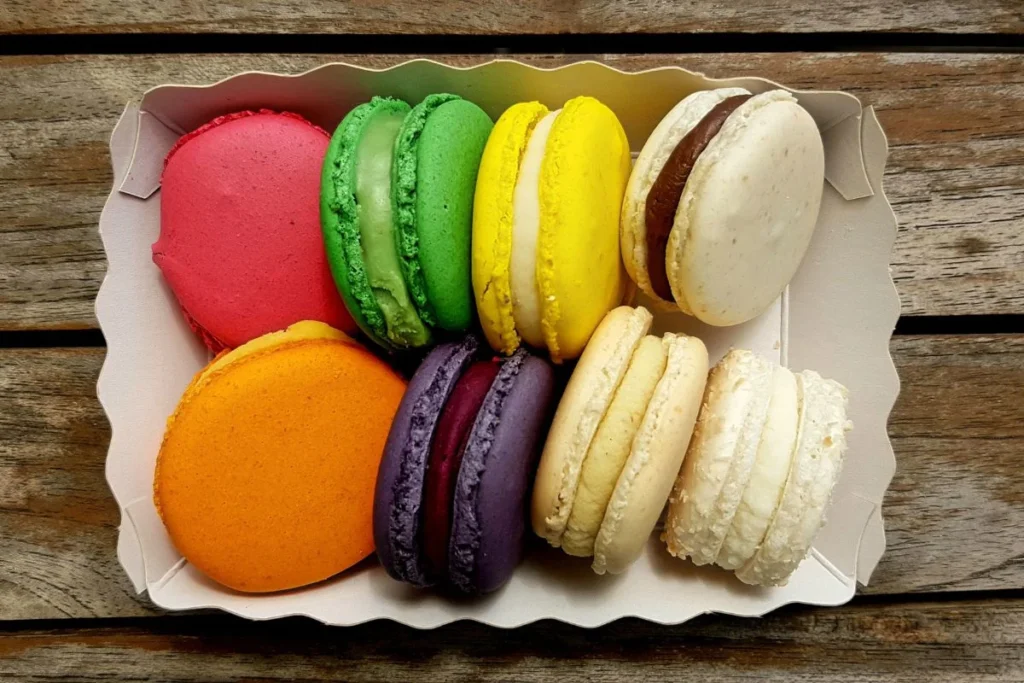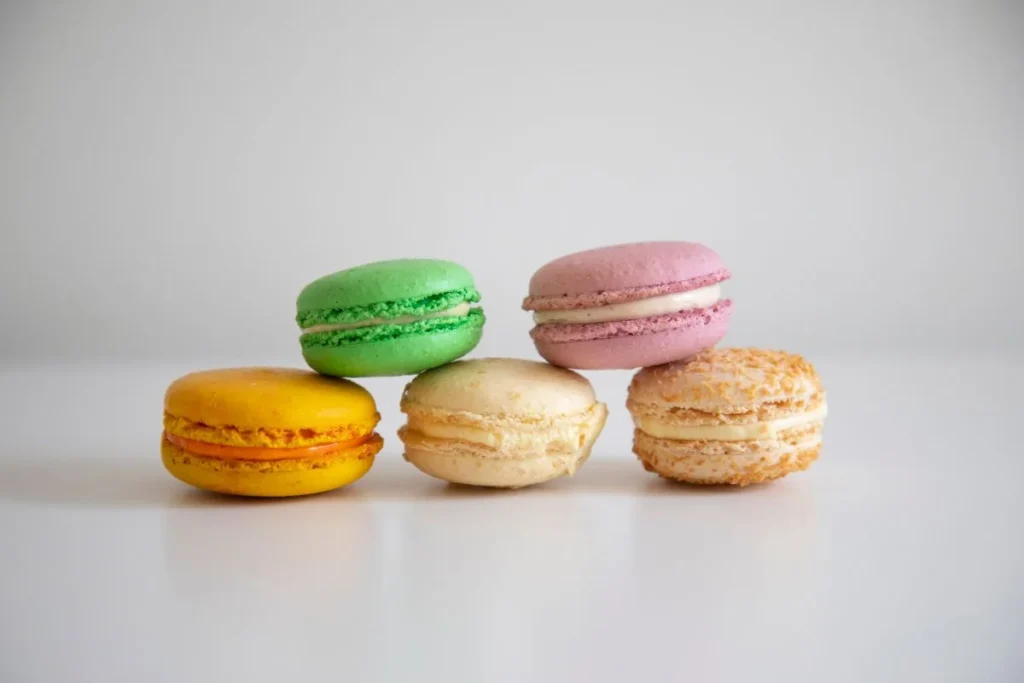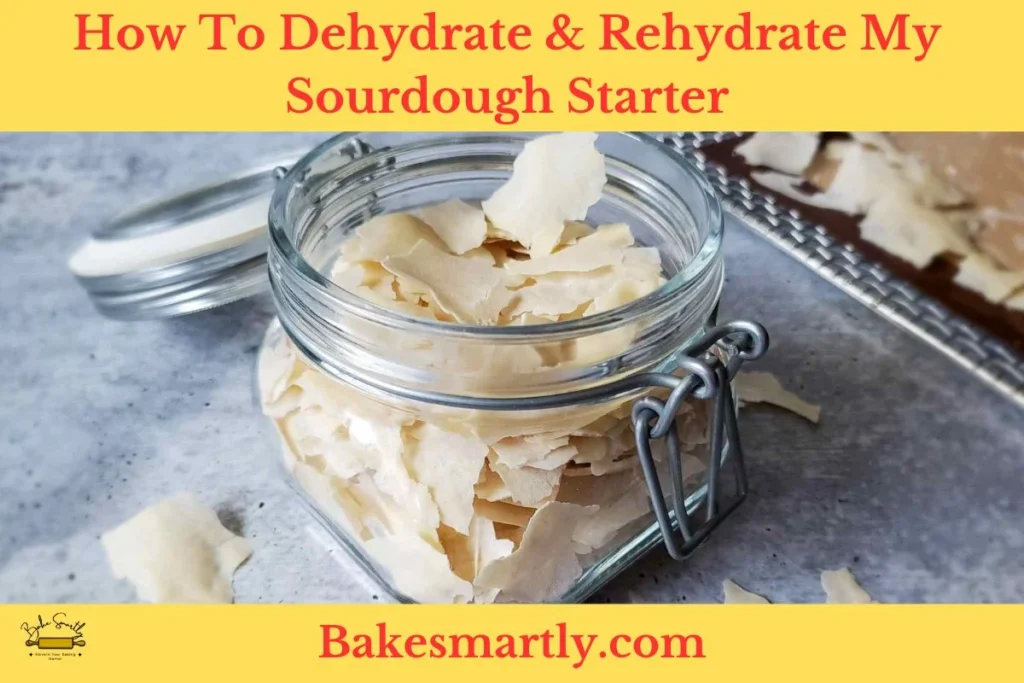
Can You Put Food Coloring in Macarons? | Ultimate Guide
Macarons are not just a treat for the taste buds; they are a canvas for creativity and visual appeal. One way to elevate the aesthetics of these delicate delights is by incorporating food coloring into the mix.
In this ultimate guide, we’ll cover everything you need to know about using food coloring in macarons, from picking the right colors to handling common issues.
Table of Contents
ToggleImportance of Food Coloring in Macaron Making
Food coloring plays a crucial role in making macarons, not just for how they look but also for how they taste. These delicate French pastries are famous for their lively and varied colors, making them a treat for the eyes.
By using food coloring, bakers can personalize macarons, creating a tempting range of colors for different occasions and themes. Beyond just looking good, the colors also tell you what flavor to expect, making it easier for people to pick their favorites.
Moreover, we know that bright colors can affect how we perceive taste, making food more enjoyable. In the world of macaron making, picking the right food coloring and using it carefully adds to the artistry and charm of these small delights, turning them into not just sweets but visually stunning and tasty treats.
Types of Food Coloring For Macarons
Picking the right food coloring for your macarons is important to get those vibrant and eye-catching results. There are different types of food coloring to choose from, each with its special qualities.
Gel Food Coloring
Gel-based colors are super concentrated and come in a thick, gel-like form. Many bakers love using them for macarons because they pack a punch of color without making the batter too watery.
You can find gel food coloring in many shades, giving you plenty of options.
Powdered Food Coloring
Powdered colors are a hit among macaron fans. They’re in fine powder form and can make your macarons pop with color. Using powdered coloring won’t mess with your batter’s consistency since it doesn’t add extra liquid.
Just make sure to sift the powder well to avoid clumps in the batter.
Liquid Food Coloring
Liquid colors are easy to find and come in tons of shades. They’re convenient, but be careful not to go overboard with them, as too much liquid can mess with the texture of your macarons.
If you go for liquid food coloring, consider cutting back on other liquid ingredients in your recipe to keep your batter just right.
Natural Food Coloring
If you’re into natural options, there are plant-based food colorings made from things like beets, spinach, or turmeric. They might not give you as bold colors as the synthetic stuff, but they’re a healthier choice for those who want something more natural.

Techniques for Incorporating Food Coloring into Macaron Batter
Adding food coloring to macaron batter is a bit of an art. It’s important to find the right balance between vibrant colors and maintaining the structure of the macarons.
Here, we’ll explore the step-by-step process to ensure your macarons not only look stunning but also maintain their delicate texture and flavor.
1. Choose the Right Moment
Timing is everything when adding food coloring to your macaron batter. The ideal time to incorporate the color is during the macaronage stage. This is when you’re folding the almond flour and powdered sugar mixture into the egg whites.
Adding the coloring at this point ensures even distribution without overmixing, which could lead to undesired texture changes.
2. Opt for Gel-Based Colors
Gel-based food coloring is preferred for macarons due to its concentrated nature. Unlike liquid alternatives, gel-based colors won’t introduce excess moisture into the batter, helping maintain the macaron’s structure and consistency.
Start with a small amount, as gel colors are potent, and you can gradually add more to achieve the desired hue.
3. Mix Colors Carefully
Creating a custom color palette involves mixing different shades. Use a toothpick or a small spatula to add a tiny amount of color at a time. Remember, it’s easier to add more color if needed than to correct an overly intense shade.
Mix gently and patiently until the color is evenly distributed throughout the batter.
4. Embrace the Marbling Effect
For a visually striking effect, consider marbling the colors. To achieve this, leave streaks of color in the batter rather than fully incorporating it. As the macarons bake, these streaks will create a beautiful marbled pattern, adding an extra layer of visual appeal.
5. Test for Consistency:
Once you’ve achieved the desired color, it’s crucial to check the consistency of the batter. Lift a small amount of batter with the spatula and let it fall back into the bowl.
The batter should flow slowly, creating a smooth ribbon. If it’s too thick, continue folding; if it’s too runny, you may have overmixed.

Tips for Achieving Vibrant Colors in Macarons
Achieving vibrant colors in macarons is an art that combines precision, creativity, and a keen understanding of the baking process. Follow these tips to make your macarons burst with vibrant colors that not only look amazing but also taste delicious.
- High-Quality Food Coloring: Invest in high-quality gel or powder food coloring to achieve intense and vibrant shades. Liquid food coloring may alter the macaron batter consistency, affecting the final result.
- Gel vs. Powder: Opt for gel or powder food coloring over liquid options. Gels and powders are more concentrated, providing vivid colors without adding excess liquid to the batter.
- Color Mixing: Experiment with color combinations to create unique shades. Be mindful of color theory to understand how different hues interact and complement each other.
- Sift Dry Ingredients: Ensure the dry ingredients, especially the almond flour, and confectioners’ sugar, are well-sifted to create a smooth and consistent batter. This helps in evenly distributing the color throughout the mixture.
- Fold Gently: When incorporating the food coloring into the batter, fold gently and avoid overmixing. Overmixing can deflate the batter, leading to flat macarons with uneven coloring.
- Consistent Piping: Maintain consistent piping pressure to ensure uniform shapes and colors. Varying pressure can result in unevenly colored macarons.
- Resting Time: Allow the piped macarons to rest before baking. This not only helps in forming a skin but also allows the colors to settle and intensify.
- Temperature Control: Pay attention to oven temperature. Fluctuations can affect color development. Invest in an oven thermometer to ensure accurate temperatures.
Common Mistakes To Avoid When Using Food Coloring in Macarons
Using food coloring in macarons can be a fun way to give these delicate treats a pop of vibrant and eye-catching colors.
However, there are some common mistakes that many bakers make when adding food coloring to their macaron recipes. Avoiding these slip-ups will help you get just the right balance of color and flavor in your macarons.
One common mistake is using liquid food coloring instead of gel or powder. Liquid coloring can mess with the macaron batter’s thickness, making it too runny and leading to flat, spread-out cookies.
Gel or powder forms are more concentrated and won’t mess up the texture of your macarons. Also, liquid colors might add too much moisture, messing with the macarons’ structure during baking.
Another mistake to avoid is going overboard with food coloring. It might be tempting to make the colors intense, but using too much can throw off the ingredient balance and give your macarons an unpleasant taste.
It’s important to start with a small amount and slowly add more until you get the color you want without messing up the flavor of the macarons.
Timing is crucial when adding food coloring too. If you add it too early in the mixing process, it might not spread evenly, leaving you with splotchy or marbled macarons. Add the coloring during the macaronage stage, folding it in gently to make sure it’s evenly mixed.
Another common mistake is not accounting for color changes during baking. Macarons tend to get darker as they bake, so try aiming for a slightly lighter shade than your final desired color.
Testing a small batch before making a whole batch can help you make adjustments and get the perfect color after baking.

Natural Alternatives to Food Coloring in Macarons
Making colorful and eye-catching macarons without using fake food coloring is a fun challenge that lets you explore a range of natural options. These alternatives not only give your macarons unique flavors but also provide a healthier and more natural way to get a variety of colors.
One versatile natural option is fruit and vegetable powders. These powders come from dried fruits and veggies, keeping their bright colors without any artificial stuff.
For example, beetroot powder can give your macarons a lovely pink or red color, and spirulina powder brings in a natural green shade. These powders not only make your macarons look stunning but also add subtle flavors, making them taste even better.
Another popular natural choice is butterfly pea flower extract. It gives your macarons a cool blue color that can change when it interacts with acidic or alkaline ingredients, creating a visually interesting experience for your eyes and taste buds.
If you’re into a natural green color with an earthy flavor, try matcha powder from green tea leaves. It doesn’t just bring a vibrant color but also adds a hint of complexity to the taste of your macarons.
Turmeric, a golden-yellow spice known for its health benefits, is perfect for achieving warm yellow tones in your macarons. It not only gives a visually appealing color but also adds a mild, slightly peppery flavor, making your macarons stand out in both looks and taste.
Can Too Much Food Coloring Make Macarons Crack?
Using too much food coloring in macarons can cause them to crack. The delicate balance of ingredients, like almond flour and egg whites, in macaron shells can be thrown off by too much liquid, changing the batter’s texture.
Liquid food coloring, especially, adds extra moisture, messing with the macaron’s structure while baking.
This can result in uneven expansion and cracks. To get vibrant colors without messing up the macaron’s texture, it’s best to use gel or powdered food coloring sparingly.
Paying close attention to ingredient amounts and mixing techniques will help you keep the right balance for macarons that are both crack-free and visually appealing.
Can You Use Oil-Based Food Coloring in Macarons?
Using oil-based food coloring might seem like a good idea, but it’s usually not the best choice for macarons. The high oil content can mess up the delicate balance of the macaron batter, causing some not-so-great results.
Opting for oil-based colors could give your macarons a weird texture and consistency, affecting how good they turn out. It’s better to go with gel-based colors if you want your macarons to look great without messing up how they taste and feel.
Final Thoughts
In short, getting the hang of using food coloring in macarons turns these delicate treats into a tasty and visually appealing experience. Choosing the right gel or powdered coloring and using techniques like marbling and careful mixing ensures lively and attractive results.
This complete guide helps bakers understand the importance of color for both looks and taste, and it explores natural alternatives. By steering clear of common mistakes and following the tips, you can create a variety of macarons that not only delight the taste buds but also look stunning.
Lindsey Mackenzie
About me
Hi there! I’m Lindsey Mackenzie, the founder of Bake Smartly. Baking has been my passion since childhood, growing up in my father’s bakery. With Bake Smartly, I’m excited to share my love for all things sweet and savory. Join me on this delicious journey as we whip up scrumptious treats and sprinkle joy into every bite!






